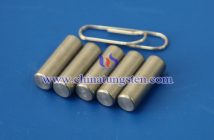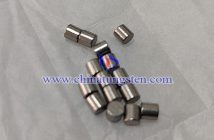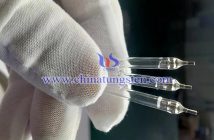It is reported that the team of Professor Yonghui Deng of Fudan University used the cooperative co-assembly between organic block copolymers and inorganic heteropolyacid molecules to directly synthesize three-dimensional, equally spaced, orthogonally arranged Si-doped ε-WO3 orthogonal nanowire arrays for the first time. And the material has excellent sensor response performance to acetone (acetone is one of the physiological and pathological landmark volatiles in human exhaled breath), which is mainly because the metastable ε-WO3 nanowire array structure has 3D stacking porous structure, abundant interface active oxygen (O-, O2-, etc.) and good electron transfer behavior.
The core of the chemical resistance semiconductor gas sensor is the gas-sensitive semiconductor material, so creating high-performance gas-sensitive materials is the key to the development of advanced gas sensors. Because high-performance gas-sensitive materials should have significant surface effects and highly interconnected pores, most researchers believe that nanowire structural materials are the best choice of raw materials.
However, in previous studies, semiconductor nanowires need to be synthesized in advance, and then various assembly strategies are used to form assemblies and apply them. Using the "bottom-up" supramolecular assembly synthesis method to directly construct the porous assembly of metal oxide semiconductor nanowire arrays is beneficial to the development of micro-nano gas sensors, but it has always been a huge challenge.
In response to the above-mentioned challenges, Professor Yonghui Deng’s research group adopted the “bottom-up” supramolecular assembly concept, using laboratory design and synthesis of organic amphiphilic block copolymers rich in sp2 hybrid carbon (such as PEO-b-PS) and Inorganic heteropoly acid cluster molecules (such as silicotungstic acid) work together. The research team manipulated the electrostatic assembly of the interface between organic macromolecules and inorganic small molecules at the molecular scale, which can cause micellization and micellar fusion between the two, and further use solvent volatilization to induce the assembly of rod-shaped micelles at the nanoscale. 3D array of composite nanowires arranged closely intersecting. In the subsequent high-temperature calcination process, the research team found that this organic-inorganic composite structure has atypical "structural transformation" behavior, that is, along with the decomposition of organic polymers, silicotungstic acid molecules migrate to the rod-shaped micelle contact area. It is transformed into Si-doped tungsten oxide nanowires in situ, and finally forms a three-dimensional, equidistant, orthogonally arranged porous array structure of metal oxide semiconductor nanowires.
Experiments show that the regular octahedral structure of γ-WO3 is locally distorted due to the doping of Si in the lattice of tungsten oxide nanowires, so the tungsten oxide in the nanowire array is metastable ε-WO3. Experiments show that the regular octahedral structure of γ-WO3 is locally distorted due to the doping of Si in the lattice of tungsten oxide nanowires, so the tungsten oxide in the nanowire array is metastable ε-WO3. The Si-doped ε-WO3 orthogonal nanowire array material exhibits excellent acetone sensing response performance and can be well used in the medical field.
Studies have found that the above-mentioned supramolecular assembly synthesis method is also suitable for other heteropoly acid systems, such as silicomolybdic acid, phosphotungstic acid, phosphomolybdic acid and other single or multiple heteropoly acids can be used as inorganic precursor molecules, and can Used to synthesize various heteroatom in-situ doped semiconductor metal oxide crossed nanowire arrays.




